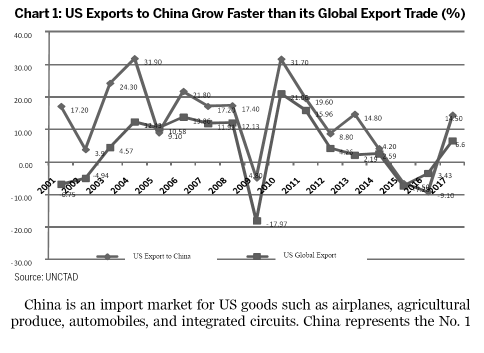The facts and China's position on China-US trade friction
China Daily | Updated: 2018-09-26 08:00
I. Mutually-beneficial and win-win cooperation between China and the US in trade and economy
Economic and trade relations have developed steadily since the establishment of diplomatic ties between China and the US, with fruitful results achieved in trade and investment. China benefits remarkably from the strong synergy, while the US also reaps extensive economic benefits from the opportunities and results generated by China's growth. It is self-evident that a sound China-US economic and trade relationship is very important for both countries. Cooperation serves the interests of the two sides and conflict can only hurt both.
- China and the US are important partners for each other in trade in goods.

Two-way trade in goods has grown rapidly. Chinese statistics show that trade in goods between China and the US in 2017 amounted to US$583.7 billion, a 233-fold increase from 1979 when the two countries forged diplomatic ties, as well as a seven-fold increase from 2001 when China joined the World Trade Organization. Currently, the US is China's biggest export market and sixth biggest source of imports. In 2017, the US took 19% of China's exports and provided 8% of China's imports. China is the fastest growing export market for US goods and the biggest source of imports of the United States. In 2017, 8% of US exports went to China.
US exports to China are growing much faster than its global average. Since its accession to the WTO, China has become an important market for US exports, which have grown rapidly. UN statistics indicate that in 2017 US exports of goods to China amounted to US$129.89 billion, a 577% increase from US$19.18 billion in 2001, and far higher than the 112% average growth rate of overall US exports (Chart 1).1
China is an import market for US goods such as airplanes, agricultural produce, automobiles, and integrated circuits. China represents the No. 1 export market for US airplanes and soybeans, and the No. 2 export market for US automobiles, IC products and cotton. In 2017 China took 57% of US soybean exports, 25% of Boeing aircraft, 20% of automobiles, 14% of ICs and 17% of cotton.
China-US bilateral trade has a strong complementarity. The US stands at the mid-and high-end in global value chains and it exports capital goods and intermediary goods to China. Remaining at the mid-and low-end in global value chains, China mainly exports consumer goods and finished products to the US. The two countries play to their comparative strengths and the two-way trade is highly complementary. In 2017, the top three categories of Chinese exports to the US were:
1.electric machines/electrical products/equipment and components,
2.mechanical apparatus and components, and
3.furniture/bedding/lamps, which accounted for 53.5% of its total exports to the US. The top three categories of products that China imported from the US were
1.machinery/electric equipment/components and accessories,
2.mechanical apparatus and components, and
3.automobile and components and accessories, which accounted for 31.8% of total import from the US. Machinery and electronic products take a lion's share of two-way trade, and there is an evident characteristic of intra-industry trade. (Table 1) For most of the hi-tech products that China exports to the US, only labor-intensive processing takes place in China, involving large-scale import of key components and intermediary products as well as international transfer of value.

























